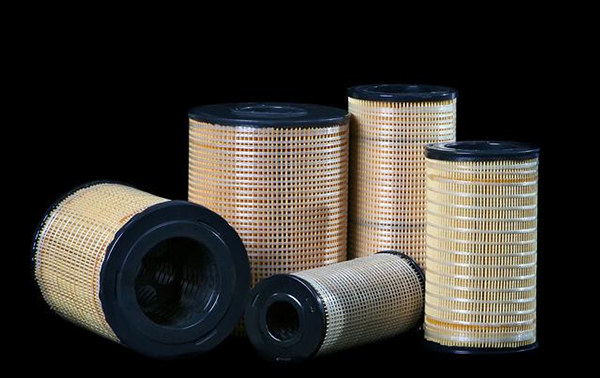 English
English Español
Español  Português
Português  русский
русский  Français
Français  日本語
日本語  Deutsch
Deutsch  tiếng Việt
tiếng Việt  Italiano
Italiano  Nederlands
Nederlands  ภาษาไทย
ภาษาไทย  Polski
Polski  한국어
한국어  Svenska
Svenska  magyar
magyar  Malay
Malay  বাংলা ভাষার
বাংলা ভাষার  Dansk
Dansk  Suomi
Suomi  हिन्दी
हिन्दी  Pilipino
Pilipino  Türkçe
Türkçe  Gaeilge
Gaeilge  العربية
العربية  Indonesia
Indonesia  Norsk
Norsk  تمل
تمل  český
český  ελληνικά
ελληνικά  український
український  Javanese
Javanese  فارسی
فارسی  தமிழ்
தமிழ்  తెలుగు
తెలుగు  नेपाली
नेपाली  Burmese
Burmese  български
български  ລາວ
ລາວ  Latine
Latine  Қазақша
Қазақша  Euskal
Euskal  Azərbaycan
Azərbaycan  Slovenský jazyk
Slovenský jazyk  Македонски
Македонски  Lietuvos
Lietuvos  Eesti Keel
Eesti Keel  Română
Română  Slovenski
Slovenski  मराठी
मराठी  Srpski језик
Srpski језик
Signs You Need a New Air Filter
2024-09-03

The function of the air filter is to prevent sand and dust from flowing into the engine intake system, maintain the engine's cylinder, piston and piston rings, extend the service life of the engine, and enable the engine to fully burn fuel.
The function of the air filter is to prevent sand and dust from flowing into the engine intake system, maintain the engine's cylinders, pistons and piston rings, extend the service life of the engine, enable the engine to fully burn fuel, avoid dust from wearing on the engine, and thus ensure that the engine Effective use of power and extension of service life, while reducing environmental pollution.
Air filters can be divided into three categories based on how impurities are removed:
Inertial type: When the airflow rapidly changes the flow direction, larger particles are removed due to the greater inertia of the dust particles.
Oil bath type: Before the air enters the filter element, it flows over the surface of the engine oil at the air flow turning point, and large particles are thrown out due to inertia, and the dust is adhered to the oil.
Filtration type: multiple collisions occur when the air flows through the micropores of the filter element or the narrow and tortuous filter element channel, causing dust to be blocked or adhered to the filter element. This is a major filtration method and is the most effective for removing fine dust.
The air filter used on modern engines combines the above three filtration methods to form a comprehensive air filter.
Shop for air filters online or visit our website to find the product you want and let one of our knowledgeable team members help you.
FAQs Concerning Air Filters
How do I know when it's time to change my air filter?

Most of the air filters we use are dry air filters, and their filter materials are almost all paper or non-woven fabrics. When the air passes through the filter material, dust and impurities will be adsorbed on the surface of the fiber layer, while clean air enters the air through the filter paper. filter inside. Each time you blow the air filter, the strong airflow will blow away the dust and also make the gap between the fiber layers larger. The more times you blow the air filter, the larger the gaps between the fiber layers will be. As a result, dust and impurities in the air will enter the engine through these gaps, which will not only cause the parts in the engine to wear, but also easily cause carbon deposits to contaminate the engine oil. We must remember to blow the air filter frequently. Generally, it is time to replace the air filter with a new one after blowing it 3 times.
How much do air filters cost?
The phrase starting with 'You need to replace...can send shivers down the spine of any car owner, but the air filter is one of the cheapest fixes in your vehicle. Many range from $15 to $25 depending on your car's make, model and engine.
What happens if I never change my car's air filter?
Dirty air filters restrict airflow to your engine which restricts both power and efficiency. Over time, a dirty air filter will cut down the mileage and affect how well your car accelerates and runs.
Buy replacement air filters online or visit your local Advance Auto Parts store and have one of our knowled gable Team Members help you.
Signs You Need a New Air Filter
A dirty air filter slows down your car. A really dirty air filter could let in dirt and debris that risks damaging your engine. These are the signs it's time to change yours for a fresh, clean air filter:
1.Mechanic's Recommendation
Your mechanic should let you know when it's time to change your air filter, but you should use the steps below to confirm for yourself (and change your own because it's easy and will save money).
2.Overall Mileage
When one tank of gas doesn't last as long as it did in the past.
3.Overall Power
A noticeable reduction in acceleration or overall 'sluggish' feel when you drive.
4.Dirt & Debris
Dust or dirt falls out of your air filter when you remove it and give it a shake.
5.Engine Noise
An especially dirty air filter can let debris into your car's spark plugs, causing engine noise and even misfiring.
6.Exhaust
Dark smog emits from your car's exhaust
Types of Air Filter
There are three different types of engine air filters — paper, gauze, and foam. While you may not have to decide which one is right for your (most people will follow the manufacturer's recommendation), it's useful to know the difference.
● Paper air filter
This is the most common filter on the road and the most affordable option for most people. However, since they are typically replaced every 5,000 to 10,000 miles, replacement costs can add up over time.
● Gauze air filter
These are a popular choice for long-term use because the gauze filters can be cleaned and reused. There are two types of gauze air filters: Oil gauze filters use oil to trap dirt and debris and need to be re-oiled every 5,000 to 10,000 miles after cleaning, while dry synthetic gauze filters only need to be cleaned and reinstalled.
● foam air filter
These are more common in smaller motors like lawn mowers, but some filters have foam wraps that add protection to the air filter.
How to Install an Air Filter
Every car is different and you should check your owners manual for the specific steps of an air filter replacement, but most will follow these general steps:
1.Open the hood of your car and find the intake. It usually looks like a big black box with a large hose leading into your engine and it's often explicitly labeled.
2.Find any hooks, latches, or screws that hold it in place (there shouldn't be many). Undo them and lift up the intake cover, exposing the air filter.
3.Pull out the air filter, playing close attention to how it was installed (some air filters point in a specific direction) and install the new one the same way.
Close up the intake, shut the hood, and you're off!



